![]()
![]()
![]()
Use LEFT and RIGHT arrow keys to navigate between flashcards;
Use UP and DOWN arrow keys to flip the card;
H to show hint;
A reads text to speech;
20 Cards in this Set
- Front
- Back
|
What's the difference between morphological and physiological adaptations of plants to particular environmental conditions? |
Morphological adaptations: involve the structure of the plant
Physiological adaptations involve changes in how plants carry out various processes |
|
|
What are three morphological adaptations some plants have made to arid conditions? |
Extended deep roots, extensive lateral roots, seasonal changes in leaf sizes and types, water storage of cells, absence of water-losing green leaves, impervious epidermal layer, sunken stomata, hairs on plant, presence of smaller cells, ability to maintain high osmotic pressures within cells. |
|
|
What is the diference between C-3 and C-4 types of photosynthesis? |
C3: high transpiration rates: Less water efficient because stomata are wide open. optimum photosynthesis occurs at less than full sunlight and at moderate temperatures. C4: more water efficient: best during full sunlight and under high temperatures.
C3's common in northern/cooler grasses C4's common in southern/warmer grasslands. |
|
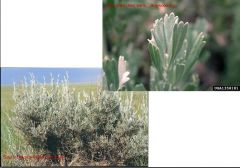
What are the scientific and common names? |
Artemisia tridentata Big sagebrush |
|
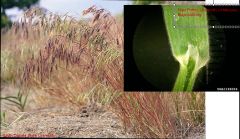
What are the scientific and common names? |
Bromus tectorum Cheatgrass |
|
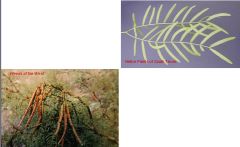
What are the scientific and common names? (hot desert) |
Prosopis glandulosa Honey mesquite |
|
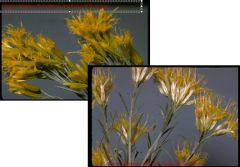
What are the scientific and common names? |
Ericameria nauseosa Rubber rabbitbrush |
|
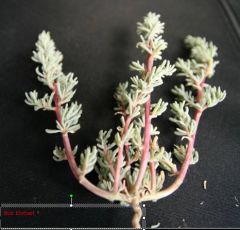
What are the scientific and common names? |
Halogeton glomeratus Halogeton |
|

What are the scientific and common names? (hot desert) |
Larrea tridentata Creosotebush |
|
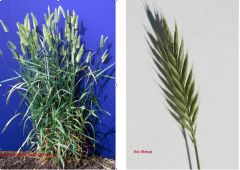
What are the scientific and common names? |
Agropyron cristatum Crested wheatgrass |
|

What are the scientific and common names? |
Salsola kali - Russian thistle |
|
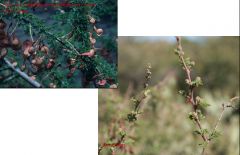
What are the scientific and common names? (hot desert) |
Acacia greggii Catclaw acacia |
|
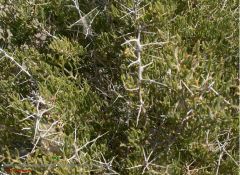
What are the scientific and common names? |
Sarcobatus vermiculatus Greasewood |
|
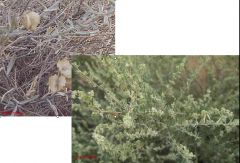
What are the scientific and common names? |
Atriplex canescens Fourwing saltbush |
|
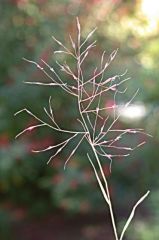
What are the scientific and common names? (hot desert) |
Muhlenbergia porteri Bush muhly |
|
|
Name the region: within the Great Basin region, it's encompassed between the two major mountain ranges (Rockies and the Sierra Nevada-Cascades) aka the Intermountain West |
Cold Desert |
|
|
Name the region: low precipitation/humidity, extremely high daytime temps that plummet @ night. (Arid from low moisture and high temps.) Sunny w/ strong winds: high evapotranspiration exceeds precip (abrasion and erosion). |
Hot Desert |
|
|
What is the difference between precipitation of Hot and Cold Deserts? |
Cold: most precipitation occurs during late winter and early spring (snow)
Hot: most moisture in the summer
|
|
|
What are 3 distinguishing characteristics of the Great Basin (Cold Desert/intermountain west) |
Precip: late winter-early spring C3 photosynthesis (high evapotranspiration and summer temps) high amounts of salt in the soil
|
|
|
What is the importance of Halomorphic soils?
[Soils formed from salty parent material (in Cold Deserts), and closed basins with evaporation that leaves salt deposits behind] High pH +7 (alkaline soils) |
Few plants can tolerate high salinity conditions, so halomorphic soils are very influential in vegetative makeup within the Cold Desert. |

